Summarized from a consultation originally recorded on June 18th, 2025.
Annmarie Skin Care Skin Consultations are FREE, virtual group sessions, hosted live by our in-house skin experts, to provide personalized recommendations and directly answer any skin care related questions. Learn more about our skin consultations.
Kate – Annmarie Skin Care In-House Esthetician: Welcome, everyone. We’re going to get started here. I’m just getting all my ducks in a row—I just came off a lovely live call all about our facial cream, and I’m reviewing some of the questions that came in. Perfect. We might have a few more people join us, or it might just be this small group—and that’s completely fine. I saw some feedback mentioning concerns with fine lines, wrinkles, dark spots, and elasticity, along with occasional breakouts and sensitivity. If you’d like to share what you’re hoping to learn—whether by coming off mute or using the chat—I’d love to know how I can support you today.
Customer: You can hear me, right?
Kate – Annmarie Skin Care In-House Esthetician: Yes, I can hear you.
Customer: So it’s basically dry skin, aging skin—but I was also curious about the masks and exfoliants.
Kate – Annmarie Skin Care In-House Esthetician: Great, we’ve got a range of skin needs here today, so I’ll aim to share information to help you build a routine that suits your skin type. We’ll start with cleansers, then talk about exfoliants and masks, followed by toning mists, serums, and moisturizers. If time allows, we’ll get into boosters, eye care, and more. But for now, let’s focus on getting you the most important information.
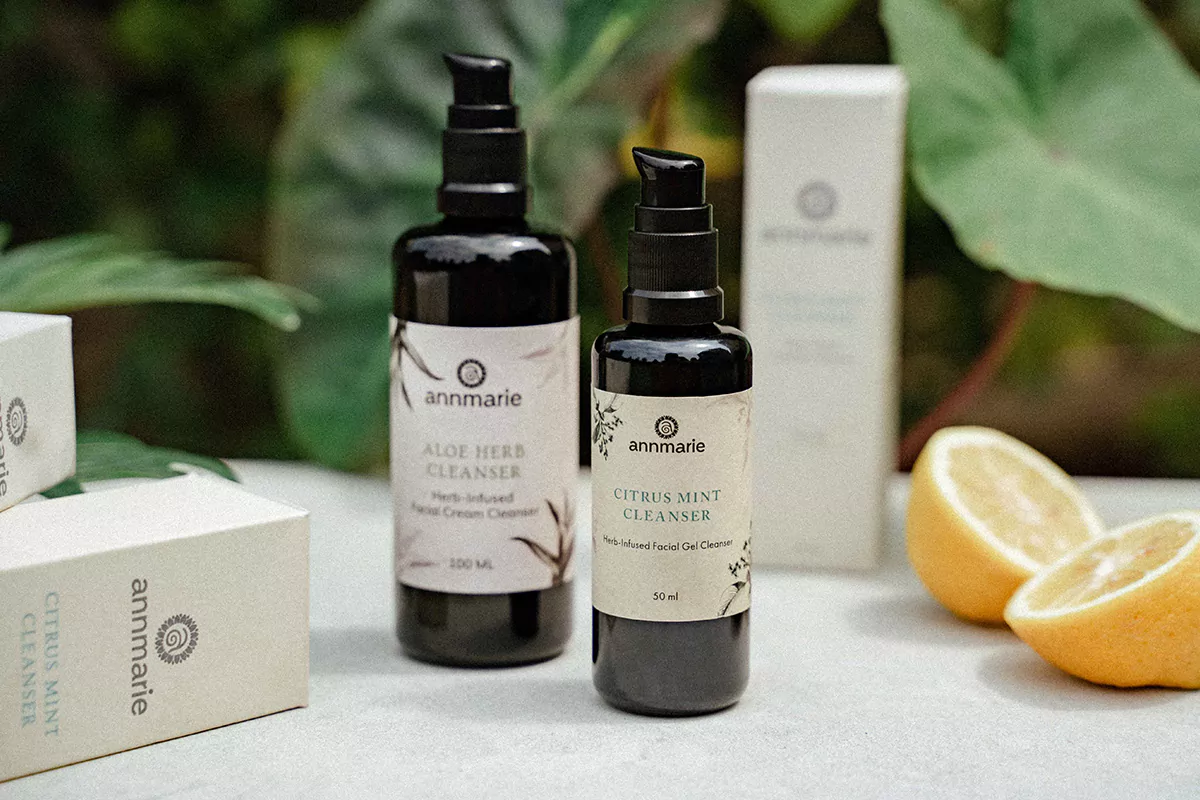
Let’s begin with cleansers. We have several different kinds, depending on your skin type. If your skin leans dry or dry-combination, a great option is our Aloe Herb Cleanser. It’s a soft, creamy formula that’s also well-suited for sensitive skin. It comes in two sizes and is a good starting point if your skin tends to feel tight or dry after cleansing. For anyone who mentioned sensitivity and occasional breakouts, I want to call out another option—the Citrus Mint Cleanser. This may offer the best support for those specific needs. It’s a gel-based cleanser formulated with ingredients like rosemary and white willow bark. These ingredients help break down excess oil and provide a deeply refreshing cleanse. It’s not harsh or overly drying—it leaves the skin feeling balanced. If your skin fluctuates between oily and dry, or if you're looking to maintain a more youthful appearance while managing oil, this is a great option to consider.
Another one to highlight is our Phytonutrient Cleanser. This has a richer texture and includes mango seed butter, which gives it a nourishing, cushiony feel. It’s not as moisturizing as the Aloe Herb Cleanser, but it sits somewhere between that and the Citrus Mint in terms of texture and finish. The Phytonutrient Cleanser includes a blend of botanical extracts and a signature serum blend that was created to support the appearance of more youthful, even-toned skin. It also features apple extract, which can help improve the appearance of dark spots or uneven skin tone. This one works well for those whose skin doesn’t fit neatly into “dry” or “oily”—it can be supportive across a range of needs. When using any of these cleansers, you'll want to wet your hands and face first, then gently massage the cleanser into the skin. I recommend leaving it on for about 30 seconds to allow the ingredients to do their work before rinsing and moving on to the next step in your routine.
Kate – Annmarie Skin Care In-House Esthetician: Now, I know someone specifically asked about exfoliants, so let’s talk about those—and then we’ll move into a couple of masks. When it comes to exfoliating, a good general rule is to start with once a week. Some exfoliants can be used more frequently, and some you may find work better for you when used less often. I’ll touch on those variations, but once a week is typically a great place to start. You’ll still begin with a cleanser, then follow with your exfoliant. If you're planning to use a mask as well, you can apply it after exfoliating, or you can choose to do that on a different day. After that, you’ll continue with your serum, then either your oil or cream, depending on your routine.
Let’s go over the exfoliating options we offer. One of my absolute favorites is the Radiant C Mask & Polish. This comes as a dry, loose powder and is meant to be mixed with water—or even with your cleanser—to create a texture that works best for your skin. If your skin tends to be oily, you might use less water to achieve a more concentrated, gritty consistency. If your skin is sensitive or more combination, you can add more water to make it softer and gentler. This customizability makes it really versatile. If you’ve been advised to exfoliate more than once a week, there are other options that may be a better fit for your needs. The Radiance Sea Polish is generally mild, and if you're blending it into a cleanser, many people find they can use it more than once a week. That said, if your skin requires something with a bit more intensity, the next two options might be more suitable.
Another option is the Kaolin Micro Exfoliant. This one has a true gritty texture—it contains finely ground bamboo stem, and the feel on the skin is more textured and stimulating. For those with dry skin, using this more than once a week may lead to dryness, so once a week is usually ideal. It provides a sensation similar to a gentle microdermabrasion. Even if your skin is on the drier or more sensitive side, this exfoliant can still be used—you’ll just want to be mindful of the frequency. If your skin leans oily, using it up to three or four times a week might offer the results you’re looking for.
Next is the Resurfacing Facial Exfoliant, which is our most intensive exfoliating option. This one uses fruit-derived lactic acid to exfoliate without any physical texture—it’s a gel-based product that you apply to clean skin like a mask. The lactic acid works on the skin’s surface to help loosen and lift buildup. If you have oily, thicker, or breakout-prone skin, this exfoliant can be especially useful. It can also be spot-applied to areas that need extra attention.
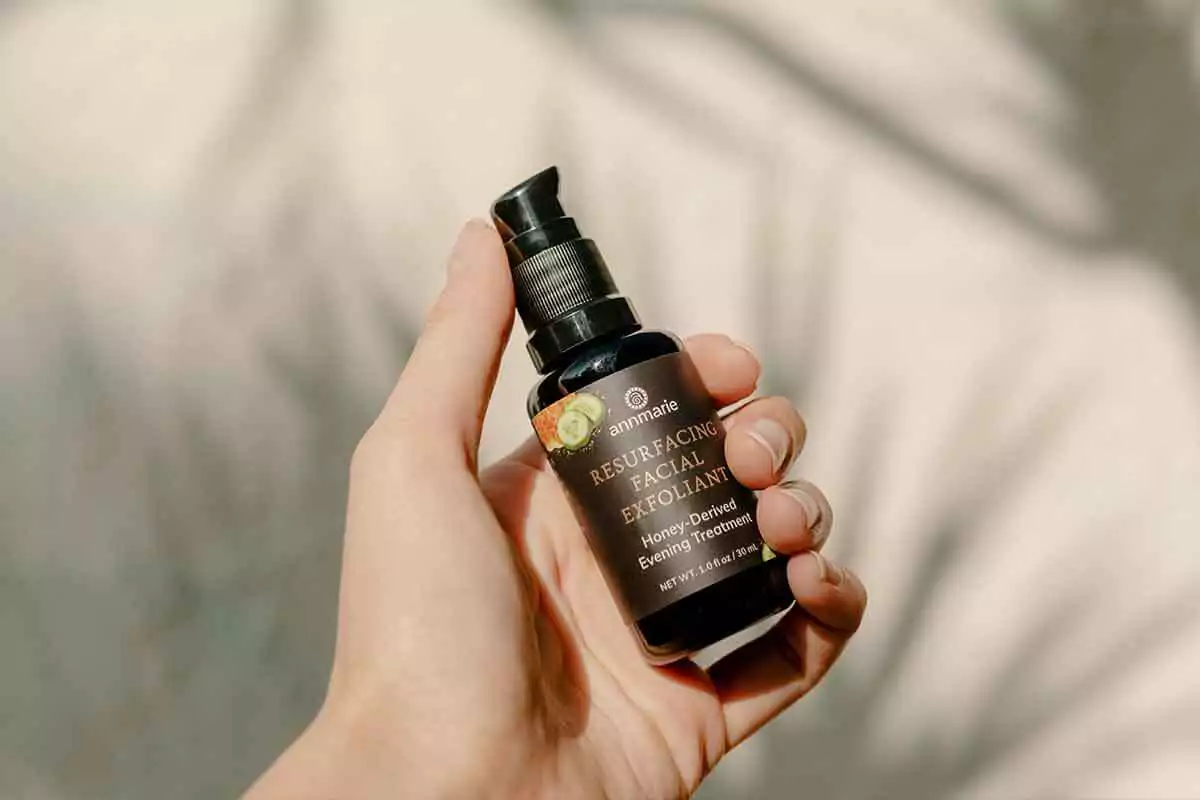
Because this product contains lactic acid, it’s normal to experience some activity—like warmth or tingling—after applying. That’s part of how the product works. Most people start by using it once a week, and for some, especially those with oily or resilient skin, two to three times per week may be appropriate. However, I always recommend starting with once per week and waiting a few days to observe how your skin responds. It’s not unusual to experience mild dryness or slight pinkness the following day. If your skin is particularly oily or thick, you may not notice any of that—but if you do, it’s generally nothing to worry about and should normalize quickly. This exfoliant tends to be a great option for those working on uneven skin tone or stubborn visible lines. Now, it’s important to note: when it comes to the appearance of creases or deeper lines in the skin, some of those may originate from muscle movement and can’t be addressed with topical products alone. But if the concern is more surface level, this exfoliant can be a great support. It’s also especially effective for improving the appearance of dark spots, particularly in areas like the cheeks—lactic acid is well-known for its brightening benefits. So, those are the exfoliants we offer. With any of them, start by using it once, see how your skin reacts, and adjust your routine from there. Some of you will find once a week is perfect, and others may decide to increase frequency if your skin responds well and needs that extra support.
This is where masking fits into your routine. After cleansing and exfoliating, you can choose to mask, but you don’t have to do them on the same day. That’s a common point of confusion. Some people prefer to stack their skincare steps and do both exfoliating and masking together, while others prefer to spread them out on different days. There’s no one right way—both approaches are completely valid. I just like to emphasize that you have the option to do them together if that works for you. Now I want to highlight two masks we offer. The first is the Illuminating Pearl Mask. This is a very soft, brightening mask that supports the appearance of more radiant, even-toned skin. It contains ingredients like uva ursi and licorice root, which are known to help improve the look of uneven skin tone. Crushed pearl powder gives the skin a luminous glow and leaves it feeling extra smooth and supple. The texture and scent are also quite lovely.
For oilier skin types, the Charcoal Cacao Mask might be a better fit. This one is deeply purifying—it has a rich black color and contains ingredients like activated charcoal, cacao, and turmeric. The charcoal helps to draw out impurities and absorb excess oil, while the cacao and turmeric help support an even-looking skin tone and offer antioxidant benefits. If your skin tends to be oily and you're also focused on the appearance of aging, this is a fantastic mask to consider. It has a taut, absorbing feel as it dries, and you’ll really feel it working.
Both of these masks are typically used once a week, but you can use them as often as your skin prefers. For example, I personally use the Illuminating Pearl Mask quite frequently—sometimes three to four times a week. On the other hand, I use the Charcoal Cacao Mask less often since my skin is drier—usually just once a week or every ten days. But if your skin is oily, you’ll likely enjoy how the charcoal mask feels and performs. To recap: cleanse first, exfoliate if it’s an exfoliating day, and mask if it’s a masking day. Then, you move into the next steps of your routine. If you’re not exfoliating or masking that day, you can go straight into your toning mist without skipping a beat. I have three toning mist options I want to share today. Normally I just highlight my personal favorite, but with the variety of skin needs here, it’s helpful to explore all three.
The first is the Neroli Toning Mist. This one is ideal for skin that’s combination or slightly oily but still looking to improve the appearance of fine lines. It’s a simple yet effective formula. The base is aloe vera juice, and the key ingredient—neroli—supports the look of smoother, softer skin. It’s especially great for areas where you may notice creases or expression lines becoming more visible.
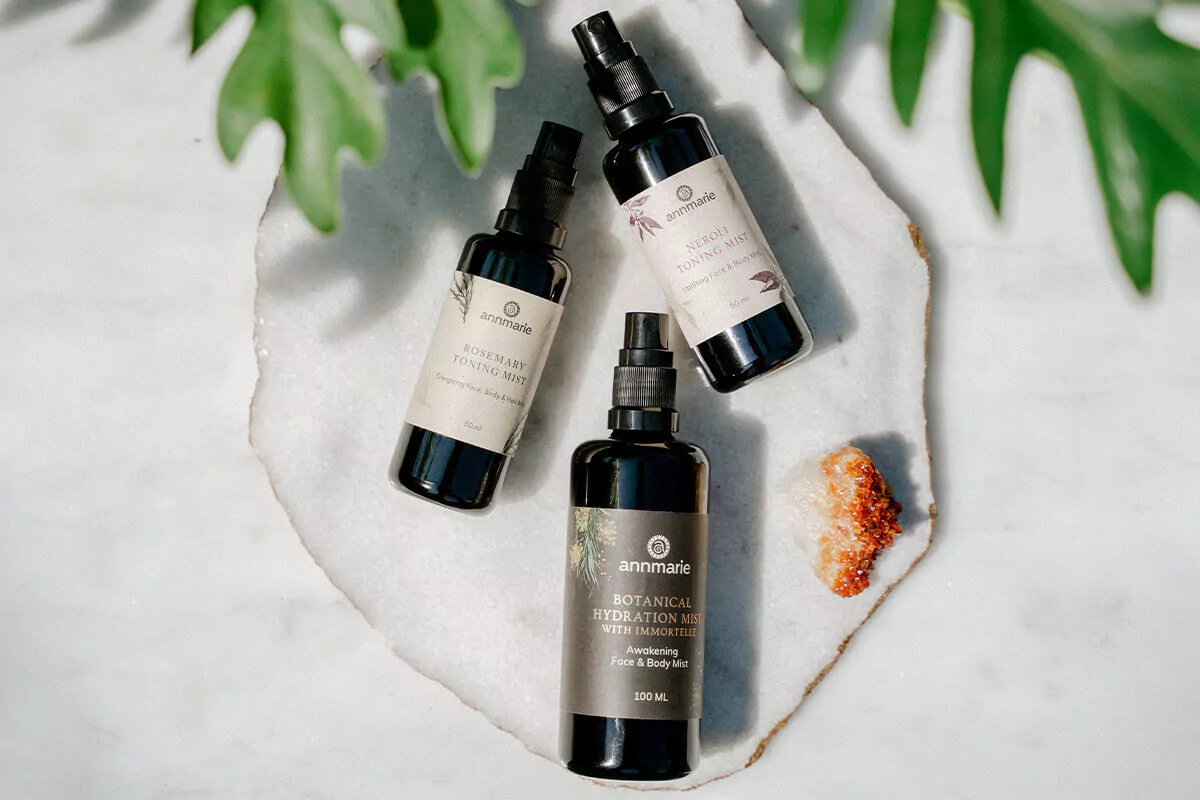
Next is the Rosemary Toning Mist. Like the others, it starts with an aloe base, but it also contains rosemary, neem, and white willow bark. This one is amazing if your skin is oily or breakout-prone. It can be used throughout the day to refresh the skin—just be mindful if you're keeping it in your car, as heat can degrade the formula. What’s great about this one is that it helps absorb excess oil without over-drying or flattening the skin’s natural appearance. It doesn’t strip the skin like some blotting powders or alcohol-based products might. Instead, your skin still looks plump, hydrated, and healthy—just more balanced.
The third option is the Botanical Hydration Mist with Immortelle, which is best suited for dry, mature, or sensitive skin. It’s deeply hydrating and very soothing. Now, you might be wondering: is a toning mist even necessary? The short answer is—yes, it makes a difference. Our serums all contain humectants, which are ingredients that help draw moisture into the skin to improve the appearance of plumpness and hydration. When your skin is already hydrated from a mist, those humectants have more to work with, enhancing how effectively your serum and moisturizer absorb. The application feels different, too—mist your skin and leave it damp before applying your serum and moisturizer. You can experiment by trying it both ways (damp vs. dry) and notice the difference in feel and absorption. One question that comes up often is whether our toning mists are the same as regular toners. Traditional toners can vary a lot. Some contain alcohol and are designed to remove oil or tighten the skin, but those can be harsh and stripping. Others are much gentler and meant to balance pH. Our toning mists don’t contain alcohol or exfoliating acids. They’re designed to stay on the skin—not wiped away—and offer hydration and support without disrupting your moisture barrier.
If you’re trying to decide which one is right for you, here’s a simple way to think about it: if oil is your main concern, the Rosemary Toning Mist is a great choice. If your skin is more in-between—sometimes oily, sometimes dry, then the Neroli Toning Mist might be your best fit. It’s lightweight and doesn’t contain oil-absorbing ingredients like rosemary, but it’s beautifully balanced.
Kate – Annmarie Skin Care In-House Esthetician: Now from here, we get into serums. We have quite a few in our collection, but I’m going to focus on three today. If there’s one I don’t mention and you're curious about, feel free to bring it up—I’m happy to cover anything that would be helpful.
Let’s start with the Citrus Stem Cell Serum. In general, serums are lighter-weight and more targeted in their focus. This is the step in your routine where you’re really considering what you want to prioritize. The Citrus Stem Cell Serum is our lightest in texture. It does include a small amount of hyaluronic acid, but its two primary areas of focus are improving the look of dark spots and supporting the appearance of firmer, more lifted skin. This formula uses orange-derived stem cells, which work to support the skin’s natural resilience and appearance. These stem cells sit alongside your existing skin as it renews, helping to promote a more refined, even look as new skin comes to the surface. On the brightening side, this serum includes uva ursi, licorice root, and amla berry. These three ingredients are known as tyrosinase inhibitors, which means they help reduce the appearance of dark spots and post-blemish marks. They’re especially helpful for visible signs of sun damage or areas where skin tone appears uneven. So with this serum, you're getting both brightening support and that firmer, lifted look from the stem cells.
Next up is the Wild Fruit Serum. This one is more hydrating and is often chosen for addressing a broad range of signs of aging. It also includes targeted brighteners like uva ursi and kakadu plum, which is rich in vitamin C. You’ll also find hyaluronic acid and resveratrol here. This is what I’d call one of our top-shelf formulas—it’s rich, nourishing, and really well-rounded.
Now, the third one I want to mention is a night serum: the Activated Night Serum. This one may feel too rich for oilier skin types, so I’ll share a lighter-weight alternative in a moment. This serum contains Bioactive A, a plant-based alternative to traditional retinol. If you’ve used or considered retinol in the past, this is a great non-toxic option. The consistency is creamy, so it’s great for dry or combination skin. It’s especially helpful for those dealing with multiple concerns at once—like fine lines, the look of large pores, occasional breakouts, or a dull tone. Since this product provides gentle exfoliation, it’s recommended for nighttime use only. We don’t suggest applying it during the day or before sun exposure, as that could make your skin more sensitive to sunlight. If the texture of the Activated Night Serum doesn’t feel like a good match for you, we do offer an alternative with our Concentrated Boosting Elixirs.
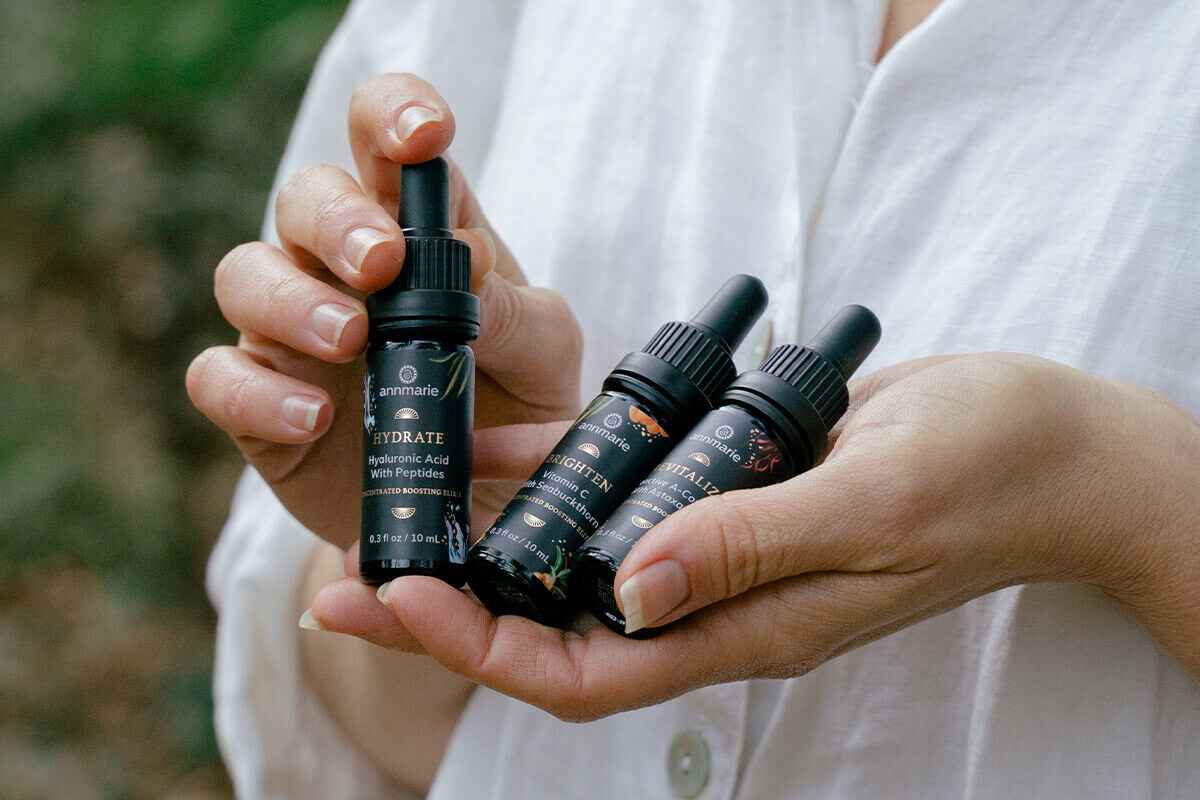
These are highly concentrated, and we recommend mixing them into your serum, cream, or oil. There are three options available. The Hydrate booster contains concentrated hyaluronic acid and peptides. Brighten features vitamin C and sea buckthorn berry, which are great for addressing the appearance of dark spots and uneven tone. Revitalize includes Bioactive A—the same key ingredient found in the Activated Night Serum. If you’re interested in the benefits of Bioactive A but prefer a lighter formula, a great option is to mix a couple drops of Revitalize into a serum like the Citrus Stem Cell Serum. This gives you the benefits of the night serum in a thinner consistency. You can also mix it into your cream. While it’s technically possible to mix it into your facial oil, many people find that it blends best with serums or creams. The Hydrate booster adds hydration and helps reinforce the skin’s natural moisture barrier. Brighten is ideal if you’re working on visible pigmentation or dark spots, including sun damage or melasma. However, it’s important to note: do not use Brighten and Revitalize together—since they work differently, they can interfere with each other’s effectiveness. Typically, Brighten is used in the daytime and Revitalize at night. Also, just a heads-up—the Revitalize booster is not yet available as a standalone product. Hydrate and Brighten are sold separately, but Revitalize is only available in the trio set at this time. We do take feedback on this, and interest has been growing, so we’ll see what happens there. If the Activated Night Serum feels too heavy for your skin, combining Citrus Stem Cell Serum with a drop or two of Revitalize is a great way to create a customized night treatment. Just make sure to use Revitalize only at night and take care to protect your skin from the sun the next day.
Now that we've cleansed the skin, exfoliated or masked if needed, toned, applied our serum, and added any boosters, the next step is moisturizing. The product I want to highlight here is incredibly versatile and works beautifully for most skin types. While it may feel a bit rich for oilier skin, some with oily complexions still love the texture. It actually feels lighter than some of our facial oils, such as the Anti-Aging Facial Oil or the Rejuvenating Facial Oil. It absorbs quickly and is packed with powerful, targeted ingredients. Even the natural preservative we use—derived from coconut—was chosen for its ability to help support the skin’s elasticity and bounce. This cream includes a generous amount of ceramides and peptides, which help reinforce the skin’s moisture barrier and maintain a supple look. For oilier skin types, it might feel slightly too moisturizing on its own. If that's the case, you can balance it out by mixing it with a facial oil that's lighter or more tailored to your needs. For those with combination or dry skin, this cream tends to feel amazing—nourishing without being overly heavy. I’m wearing it today myself. Usually, I use a facial oil, which gives the skin a more dewy and rich finish, but this cream has more of a soft, almost powdery texture once applied. The skin still feels plump and hydrated, thanks to the pineapple ceramides in the formula, but without the high-glow finish of an oil.
Now, if you're looking for added moisture or want to further customize your routine, we also offer facial oils that can be layered or mixed with the cream. One of those is the Anti-Aging Facial Oil, which is a favorite for dry skin types and provides rich hydration along with antioxidant support. Another option is the Herbal Facial Oil for Oily Skin. Even though it may seem counterintuitive to use an oil if your skin is oily, this particular formula is lightweight and helps balance oil production. It includes grapeseed and hazelnut oils, which are both fast-absorbing and non-greasy, and the herbal blend helps calm and clarify the skin. If you're experiencing temporary redness, this oil can be used as a spot treatment—just mist your skin and apply the oil directly to those areas. It’s especially helpful in soothing visible irritation and helping the skin return to balance. One of the key ingredients in the Herbal Facial Oil for Oily Skin is bitter orange leaf extract, which has been studied for its ability to help keep pores clean. If you tend to experience congestion, this oil can be used on its own or layered with a moisturizer, depending on your skin’s needs.
For those whose skin is more combination—sometimes oily, sometimes dry—we also offer the Herbal Facial Oil for Normal & Combination Skin. This formula helps bring balance to both oil and hydration levels and includes ingredients that support the appearance of more even, healthier-looking skin. It’s also packed with antioxidants to help reduce visible signs of aging. Any of these oils can be mixed with the Restorative Facial Cream to create a customized texture that suits your skin. If you're seeking a powerhouse product for visible signs of aging, the Restorative Facial Cream on its own is a top-tier choice. Mixing it with one of the facial oils, especially if you're looking to adjust the richness, is a great way to personalize your routine.
From there, you could consider your routine complete. However, if you want to add an eye product, I highly recommend the Anti-Aging Eye Cream. It’s excellent for puffiness and for maintaining the lifted appearance of the eye area. It contains stem cells, CoQ10, and cucumber distillate to help reduce the look of puffiness and fatigue. For your final step in the morning, we always recommend applying Sun Love. It offers broad-spectrum sun protection and has a beautifully balanced texture—not too thick or too light. It wears well under makeup and provides the finishing touch to your morning skincare ritual. Now, I know that’s a lot of information, so I want to open it up for any questions. Feel free to type them in the chat—I’d love to support you and make sure you’re feeling clear on what might work best for you.
As for eye care, I know there was a question about the Fruit Ceramide Eye Serum.
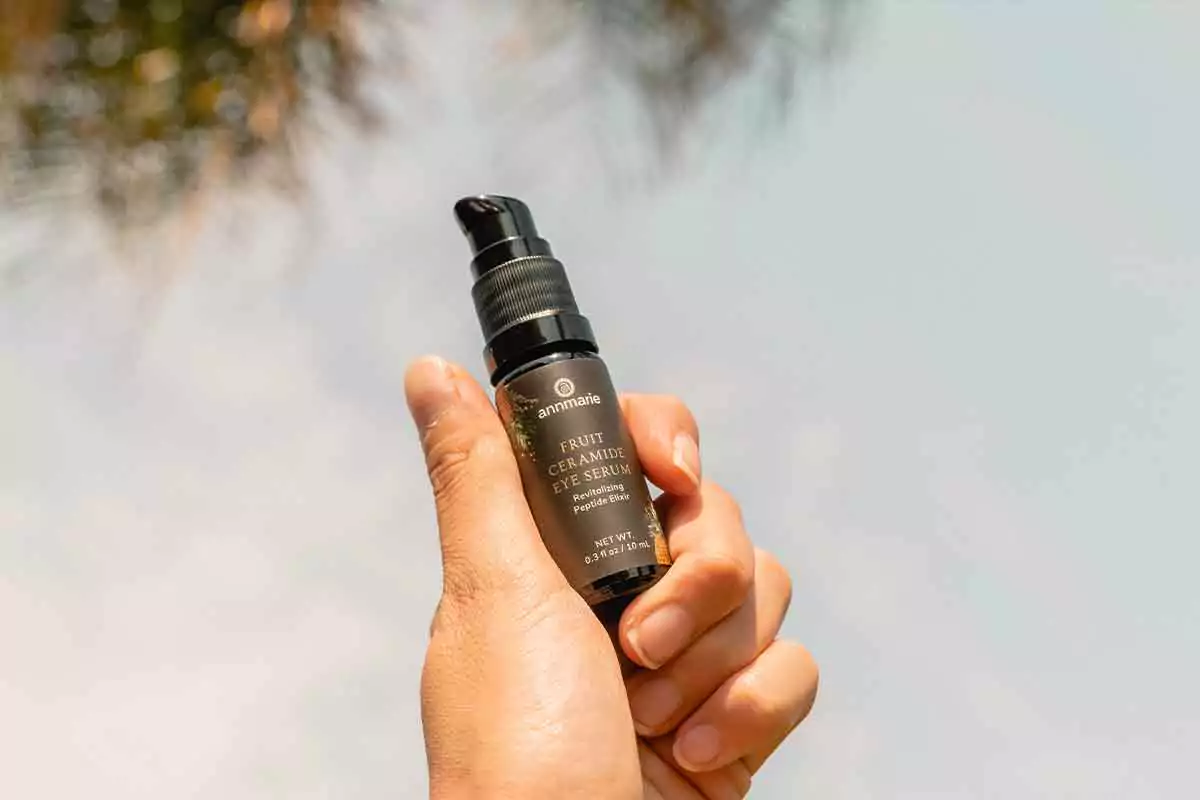
This product has a much thinner consistency compared to the eye cream—it’s more similar to our facial serums in texture. I like to describe it as a targeted treatment product. It features pineapple ceramides, sake peptides, and stem cells from lingonberry, all chosen to help reduce the appearance of creasing and drooping in the eye area. You would apply this after cleansing and misting, and you can use it either before or after your facial serum. Personally, I apply it first, followed by my facial serum, then moisturizer, and finally, the eye cream. The biggest difference between the two eye products is that the cream is more of a complete, well-rounded moisturizer for the eye area, while the serum is very specific in targeting the appearance fine lines, deeper creases, and drooping.
They actually work beautifully together. If your main concern is the appearance of sagging or deeper expression lines, using both in tandem can be especially effective. If your focus is more on prevention or light maintenance, the eye cream on its own is an excellent choice. And just to share a little behind-the-scenes info—we're currently working on an eye balm that we expect to launch either later this year or early next year. It will offer a completely different texture and user experience, and we’re really excited about it.
Customer: Yes. I was going to ask if I could come off mute because it would be so much easier.
Kate – Annmarie Skin Care In-House Esthetician: Of course.
Customer: I think my breakouts, since I’m older—I’m 60—shouldn’t really be happening anymore. But I think mine are more from clogged pores than from oily skin. I don’t really have oily skin anymore.
Kate – Annmarie Skin Care In-House Esthetician: Got it. That’s helpful. So, if they’re due to clogged pores, let me ask a follow-up question. How would you describe your skin otherwise? Are you more on the dry side? Do you experience sensitivity?
Customer: I don’t have sensitive skin—I'm not allergic to fragrances or anything like that in products. I’d say I’m more of a combination. Not super oily, but I do get some shine in the T-zone.
Kate – Annmarie Skin Care In-House Esthetician: That’s very helpful. Based on what you're describing, I’d suggest starting with either the Phytonutrient Cleanser or the Aloe Herb Cleanser. The Citrus Mint Cleanser may be too drying for your skin type. For toning, I’d still recommend the Rosemary Toning Mist. As for serums, I think the Wild Fruit Serum in the morning and either the Activated Night Serum or the Revitalize Booster at night would be great. If budget is a factor, the Wild Fruit Serum boosted with the Revitalize can be a strong nighttime combination. For clogged pores—especially as skin matures—a consistent, gentle exfoliation approach is really beneficial. Using something like the Revitalize Booster, which contains Bioactive A (our retinol alternative), can support the appearance of refined pores. Many customers report noticing a visible improvement within the first week of use. The Activated Night Serum is also a great option. You could use it on its own or boost it with Revitalize if you're looking for a more intensive nighttime treatment. Alternatively, just adding the Revitalize booster into a serum you're already using can offer similar benefits.
Customer: I also mentioned earlier that I’m concerned about elasticity. I feel like sagging skin makes you look older than fine lines or wrinkles do. I’ve seen women with wrinkles who still look great because their skin hasn’t sagged.
Kate – Annmarie Skin Care In-House Esthetician: Yes, I completely agree. When it comes to targeting sagging, stem cells are really important. The Wild Fruit Serum includes plant-derived stem cells—from Madonna Lily, in this case—that help support the skin’s firmness. When applied, these stem cells help encourage your skin to mimic their behavior, promoting a plumper, more lifted appearance over time. In addition to stem cell support, you might want to consider incorporating gua sha into your routine. Using it a couple of times a week—ideally daily—can help smooth and support the fascia of the face. Facial fascia is different from body fascia; it’s more delicate but plays a big role in structure. Using gua sha with a little slip (either your cleanser or facial oil) and gliding it along the jawline and neck can help train that tissue and encourage more lift. So in your case, I’d recommend using the Wild Fruit Serum as your base and boosting it with Revitalize in the evening. That way, you're addressing both elasticity and clogged pores.
Customer: Yes, and I also have some pigmentation concerns—probably from sun damage years ago and some healing from recent breakouts.
Kate – Annmarie Skin Care In-House Esthetician: That makes sense. The Wild Fruit Serum is a great choice here too. It contains uva ursi, which is a tyrosinase inhibitor. That means it works to reduce the appearance of dark spots by targeting areas of activated melanin and helping them fade over time. It works gradually, so expect at least one full skin cycle—about 28 to 35 days—before you start to see visible changes, with more noticeable results typically around eight weeks. Additionally, the serum includes kakadu plum, a vitamin C–rich ingredient that supports a more even-looking complexion overall. Together, these ingredients brighten the appearance of the skin from different angles. You can also enhance that with the Brighten Booster, which contains a concentrated form of vitamin C to help support the serum's brightening effects.
Customer: So I should use Revitalize at night and Brighten during the day?
Kate – Annmarie Skin Care In-House Esthetician: Exactly. And just to clarify—it’s not harmful if you accidentally mix the two, but they’re both a little less effective when used together. So we recommend alternating: use Brighten in the morning and Revitalize at night.
Customer: Got it. And do I need facial oil?
Kate – Annmarie Skin Care In-House Esthetician: You’ll still want to moisturize, and whether you choose an oil or a cream depends on your preference. Based on everything you've described, I think the Restorative Facial Cream would be an excellent fit. It's great for combination skin, absorbs quickly, and feels lightweight while delivering deep hydration. It’s rich in ceramides and formulated with a blend of ingredients that help support the appearance of aging skin. If you find it’s not quite enough moisture, you can always layer or mix in a facial oil later. But I’d recommend starting with the cream—it’s likely to be just right for your needs.
Customer: Okay, this is completely different from what I originally picked out for myself.
Kate – Annmarie Skin Care In-House Esthetician: That’s so interesting!
Customer: For the cleanser, you said either the Phytonutrient or the Aloe Herb—what's the difference?
Kate – Annmarie Skin Care In-House Esthetician: Great question. The Aloe Herb Cleanser is more focused on maintaining balance and softening the look of fine lines. The Phytonutrient Cleanser has a richer texture and targets more specific signs of aging, including pigmentation and early sagging. None of the cleansers directly address sagging in a profound way, but the Phytonutrient has a few more actives geared toward those concerns. I gave you both options because of the price point difference—they’re both great, so you can choose based on what feels most aligned with your needs and budget.
Customer: That’s helpful, thank you. Pricing is definitely a concern. If I had to leave one thing out, what would you suggest?
Kate – Annmarie Skin Care In-House Esthetician: That’s a tough one, but if we absolutely had to cut something, I’d say the Toning Mist—and only because your skin needs more targeted support from the serum. Normally, the serum would be the first to go since the cream is already very hydrating. But in your case, the serum is important for addressing both clogged pores and pigmentation, which the cream doesn’t directly target.
That said, the toning mist is helpful for absorption and product performance, so it’s still valuable.
Customer: I’m good now. Thank you so much.
Kate – Annmarie Skin Care In-House Esthetician: You’re so welcome! Now, I saw a question come through about the Botanical Hydration Mist vs. the Neroli Toning Mist. I’ll quickly explain. The Neroli Toning Mist is a simpler formula. It’s aloe-based, includes neroli and aspen bark, and is great for softening the look of fine lines—ideal for combination or fluctuating skin types. The Botanical Hydration Mist is more supportive for mature or dry skin. It contains rose and helichrysum, along with four kinds of chamomile and frankincense. It’s a little more emollient and delivers more hydration upfront. If you’re sensitive or reactive, this mist is especially soothing. Many people alternate seasonally—using Botanical in the winter and Neroli in the warmer months.
Customer: That helps a lot, thank you. Also, I was looking at the powdered exfoliant since it can be used in a few different ways.
Kate – Annmarie Skin Care In-House Esthetician: Yes, I love that one! It’s really versatile. You can use it as a scrub, a mask, or mix it with a cleanser, water, honey, or even yogurt. If you want a gentler texture, just add more water. If you want a stronger scrub, use less. It really becomes a multi-functional tool in your skincare apothecary.
Customer: You’ve answered all my questions. This has been really helpful.
Kate – Annmarie Skin Care In-House Esthetician: I’m so glad to hear that. Oh—one last thing!
Customer: Yes?
Kate – Annmarie Skin Care In-House Esthetician: If you’re using one of the Boosting Elixirs with a moisturizer, you’ll want to mix it into the moisturizer, not apply it before or after. So, pump a little moisturizer into your palm, add 1–3 drops of the booster, blend it together, and then apply it to your skin. These are very concentrated and can be too intense on their own—especially the Revitalize. Mixing helps dilute the formula slightly and allows it to spread evenly and comfortably.
Customer: That makes sense. Thank you!
Kate – Annmarie Skin Care In-House Esthetician: You're welcome! I also popped our customer support email into the chat—if you run into any issues with the promo or checkout, don’t worry. Just reach out. We're super flexible and happy to help. Hopefully, we’ll see you on another live session soon. Happy shopping, everyone!
Customer: Thank you. Bye.
Kate – Annmarie Skin Care In-House Esthetician: We'll see you later.
Want to join us for our next skin consultation? (It's totally free!)

Our team of experts has been on a mission to inspire beauty, health, and wellbeing, and we believe there's no better way to do this than through directly sharing our knowledge and passion for natural skin care.
Join us for a live session with one of our licensed estheticians where we'll explore the power of organic, bioactive ingredients, how they interact with your unique skin type, and how to incorporate them into your routine for optimal benefits. You'll walk away from this consultation feeling empowered to make informed decisions for your skin's health. Our in-house skin experts are eager to answer your questions, dispel myths, and share tailored advice for each participant.
By signing up for our live consultation, you'll not only gain access to the latest insights in organic skin care, but also receive exclusive skin care deals only available to those who attend! We can't wait for you to join our community as we share our love for organic skin care with you!
HOW TO SIGN UP
1. Simply, click the button below to sign up for the day that works best for you and your skin type.
2. Select your desired date and time, and click “Next”
3. Enter your contact information (your name and email), and click “Schedule Event.”








Leave a Reply